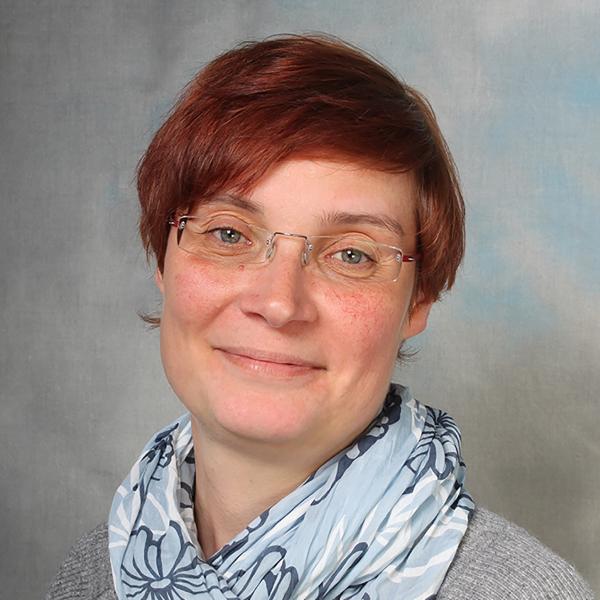Dr Barbara Ciani (she/her)
School of Mathematical and Physical Sciences
Senior Lecturer in Biophysical Chemistry
Chemistry Biological Safety Officer


+44 114 222 9438
Full contact details
School of Mathematical and Physical Sciences
C72
Dainton Building
13 Brook Hill
Sheffield
S3 7HF
- Profile
-
Dr. Ciani obtained a Laurea in Chemistry at University "La Sapienza", Rome in 1997. This was followed by a DPhil in Biochemistry at the University of Sussex in 2001, after which she became a Postdoctoral Research Associate at the University of Nottingham (2001-2003) and subsequently at the University of Manchester (2004-2008).
In 2008, she was appointed as a Lecturer in Biophysical Chemistry at the University of Sheffield.
- Qualifications
-
- FHEA
- MSRC
- Research interests
-
How is function encoded in protein self-assembly?
In our laboratory, we study the mechanisms at the basis of protein self-assembly in solution and how they regulate biological processes. Such knowledge allows us to interact both with academic and industrial collaborators and have impact in both of these areas.We focus on two main areas of interest, but any challenge that involves biophysical chemistry and biomolecular interactions spurs our curiosity and efforts!
1. Protein self-assembly proteins shape lipid membranes to maintain cellular compartmentalisation.
Compartmentalisation of chemical reactions is fundamental for the function of any biological cell. The confinement provided by membrane interfaces in intracellular organelles allows their contents to carry out specific tasks without the interference from other processes. Specifically, we focus on the biochemical and biophysical mechanisms of cellular membrane repair. Remodelling of phospholipid membranes underpins most cellular functions from membrane trafficking to viral infections and genome compartmentalisation.
Scientific Questions we are addressing –
• What are the signals that lead proteins to assemble into larger structures to sculpt phospholipid membranes?
• How does membrane integrity maintain the healthy state of a biological cell?
• Can we repurpose these biological processes for novel functions?We tackle these questions with a combination of biochemistry, cell biology and protein design approaches.
2. The physical chemistry that governs protein physical status in solution
We collaborate with industry partners to understand how to combine knowledge of protein-protein interactions with the development of specific biophysical/analytical methodologies to support prediction and faster optimisation of formulations. Such knowledge is crucial also for academics that study protein aggregation in the context of healthy and diseased states.
We tackle this challenge with a combination of biophysical and analytical chemistry techniques and structural biology approaches.
Our lab has expertise in:
- Protein engineering and high-level recombinant peptide and protein expression for structural studies
- De novo and rational design of peptides and proteins
- Protein stability and protein-protein interaction measurements
- Characterisation of self-assembly and aggregation of proteins
- Characterisation of protein-membranes interactions
- Mechanisms of nuclear envelope membranes repair
- Endosomal membrane trafficking
- Publications
-
Edited books
Journal articles
- Progesterone receptor expression contributes to gemcitabine resistance at higher ECM stiffness in breast cancer cell lines. PLoS ONE, 17(5).


- The influence of phosphatidylserine localisation and lipid phase on membrane remodelling by the ESCRT-II/ESCRT-III complex. Faraday Discussions, 232, 188-202. View this article in WRRO


- Direct binding of ESCRT protein Chm7 to phosphatidic acid–rich membranes at nuclear envelope herniations. Journal of Cell Biology, 220(3).


- In Vitro Membrane Remodeling by ESCRT is Regulated by Negative Feedback from Membrane Tension. iScience, 15, 173-184. View this article in WRRO


- ESCRT-III is necessary for the integrity of the nuclear envelope in micronuclei but is aberrant at ruptured micronuclear envelopes generating damage. Oncogenesis, 8(5). View this article in WRRO


- Topography design in model membranes: Where biology meets physics. Experimental Biology and Medicine. View this article in WRRO


- A conserved loop-wedge motif moderates reaction site search and recognition by FEN1. Nucleic Acids Research, 46(15), 7858-7872. View this article in WRRO


- pH dependent binding in de novo hetero bimetallic coiled coils. Dalton Transactions, 47(31), 10784-10790. View this article in WRRO


- The artificial cell : biology-inspired compartmentalization of chemical function. Interface Focus, 8(5).


- Membrane remodelling by a lipidated endosomal sorting complex required for transport-III chimera, in vitro. Interface Focus, 8(5). View this article in WRRO


- C5orf30 is a negative regulator of tissue damage in rheumatoid arthritis. Proceedings of the National Academy of Sciences, 112(37), 11618-11623. View this article in WRRO


- Nature's lessons in design: nanomachines to scaffold, remodel and shape membrane compartments. Phys. Chem. Chem. Phys., 17(24), 15489-15507. View this article in WRRO


- Proline Scanning Mutagenesis Reveals a Role for the Flap Endonuclease-1 Helical Cap in Substrate Unpairing. J. Biol. Chem., 288, 34239-34248. View this article in WRRO


- No evidence for cardiac dysfunction in Kif6 mutant mice.. PLoS One, 8(1), e54636. View this article in WRRO


- Molecular basis of coiled-coil oligomerization-state specificity.. Proc Natl Acad Sci U S A, 107(46), 19850-19855.


- Atomic models of de novo designed cc beta-Met amyloid-like fibrils.. J Mol Biol, 376(3), 898-912.


- Electrostatic contributions to the stability of the GCN4 leucine zipper structure.. J Mol Biol, 374(1), 206-219.


- Structure of the extracellular domain of Tie receptor tyrosine kinases and localization of the angiopoietin-binding epitope.. J Biol Chem, 281(38), 28408-28414.


- Loss of ubiquitin binding is a unifying mechanism by which mutations of SQSTM1 cause Paget's disease of bone.. Calcif Tissue Int, 78(5), 271-277.


- Loss of ubiquitin-binding associated with Paget's disease of bone p62 (SQSTM1) mutations.. J Bone Miner Res, 20(4), 619-624.


- The cornified envelope: a model of cell death in the skin. Nature Reviews Molecular Cell Biology, 6(4), 328-340.


- Structural and functional studies of mutations affecting the UBA domain of SQSTM1 (p62) which cause Paget's disease of bone.. Biochem Soc Trans, 32(Pt 5), 728-730.


- Design of beta-sheet systems for understanding the thermodynamics and kinetics of protein folding.. Curr Opin Struct Biol, 14(4), 458-464.


- Novel UBA domain mutations of SQSTM1 in Paget's disease of bone: genotype phenotype correlation, functional analysis, and structural consequences.. J Bone Miner Res, 19(7), 1122-1127.


- Incremental Contribution to Protein Stability from aβ Hairpin“Finger”: Limits on the Stability of Designedβ Hairpin Peptides. Angewandte Chemie, 116(15), 2025-2028.


- Incremental contribution to protein stability from a beta hairpin "finger": limits on the stability of designed beta hairpin peptides.. Angew Chem Int Ed Engl, 43(15), 1991-1994.


- Structure of the ubiquitin-associated domain of p62 (SQSTM1) and implications for mutations that cause Paget's disease of bone.. J Biol Chem, 278(39), 37409-37412.


- Stabilization of beta-hairpin peptides by salt bridges: role of preorganization in the energetic contribution of weak interactions.. J Am Chem Soc, 125(30), 9038-9047.


- A designed system for assessing how sequence affects alpha to beta conformational transitions in proteins.. J Biol Chem, 277(12), 10150-10155.


- Transglutaminase crosslinking and structural studies of the human small proline rich 3 protein.. Cell Death Differ, 6(9), 916-930.


- Transglutaminase 1 mutations in lamellar ichthyosis. Loss of activity due to failure of activation by proteolytic processing.. J Biol Chem, 273(22), 13693-13702.


- IODOENOLCYCLIZATION .3. A GENERAL-APPROACH TO TETRASUBSTITUTED FURANS FROM 2-ALKENYL-1,3-DICARBONYL COMPOUNDS. TETRAHEDRON LETT, 36(49), 9019-9022.


- CD9 co-operation with syndecan-1 is required for a major staphylococcal adhesion pathway. mBio. View this article in WRRO


- Chemical compartmentalisation by membranes: from biological mechanism to biomimetic applications. Physical Chemistry Chemical Physics, 17(24), 15487-15488.


Conference proceedings papers
- Recyclable bionanostructures from self-assembling peptides. EUROPEAN BIOPHYSICS JOURNAL WITH BIOPHYSICS LETTERS, Vol. 46 (pp S306-S306)


- Developing ESCRT-III as a toolkit for bottom-up construction of eukaryote-like artificial cells. EUROPEAN BIOPHYSICS JOURNAL WITH BIOPHYSICS LETTERS, Vol. 46 (pp S116-S116)


- Developing ESCRT-III as a toolkit for bottomup construction of eukaryote-like artificial cells. EUROPEAN BIOPHYSICS JOURNAL WITH BIOPHYSICS LETTERS, Vol. 46 (pp S46-S46)


- THU0515 C5orf30 A Novel Regulator of Tissue Damage in Rheumatoid Arthritis. Annals of the Rheumatic Diseases, Vol. 73(Suppl 2) (pp 361.3-361)


- 233. Biological Roles of C5ORF30 in Rheumatoid Arthritis Synovial Fibroblasts. Rheumatology, Vol. 53(suppl_1) (pp i147-i147)


- BIOLOGICAL ROLES OF C5ORF30 IN RHEUMATOID ARTHRITIS SYNOVIAL FIBROBLASTS. RHEUMATOLOGY, Vol. 53 (pp 147-147)


- THU0080 The Role of C5ORF30 in Rheumatoid Arthritis Pathogenesis. Annals of the Rheumatic Diseases, Vol. 72(Suppl 3) (pp A190.2-A190)


- The biological role of C5orf30 in rheumatoid arthritis pathogenesis. IMMUNOLOGY, Vol. 140 (pp 45-45)


- THE ROLE OF C5ORF30 IN RHEUMATOID ARTHRITIS PATHOGENESIS. ANNALS OF THE RHEUMATIC DISEASES, Vol. 72 (pp 190-190)


- BIOLOGICAL ROLES OF C5ORF30 IN RHEUMATOID ARTHRITIS. RHEUMATOLOGY, Vol. 52 (pp 50-50)


- Anti prion molecules and their interaction with amyloid beta. PRION, Vol. 7 (pp 77-77)


- Biological Roles of C5orf30 in Rheumatoid Arthritis. ARTHRITIS AND RHEUMATISM, Vol. 64(10) (pp S767-S767)


- Contributory presentations/posters. Journal of Biosciences, Vol. 24(S1) (pp 33-198)


- Solution NMR structure of the human SPR3 protein.. J INVEST DERMATOL, Vol. 108(4) (pp 98-98)


- Quantitative sub-cellular imaging with expansion microscopy. Quantitative sub-cellular imaging with expansion microscopy


- ChemInform Abstract: Iodoenolcyclization. Part 3. A General Approach to Tetrasubstituted Furans from 2-Alkenyl-1,3-dicarbonyl Compounds.. ChemInform, Vol. 27(13) (pp no-no)


Patents
Preprints
- CD9 co-operation with syndecan-1 is required for a major staphylococcal adhesion pathway, Cold Spring Harbor Laboratory.


- Direct PA-binding by Chm7 is required for nuclear envelope surveillance at herniations, Cold Spring Harbor Laboratory.


- The influence of phosphatidylserine localisation and lipid phase on membrane remodelling by the ESCRT-II/ESCRT-III complex, Cold Spring Harbor Laboratory.


- ESCRT-III accumulates in micronuclei with ruptured nuclear envelopes.


- In vitro membrane remodelling by ESCRT-II/ESCRT-III is regulated by negative feedback from membrane tension, Cold Spring Harbor Laboratory.


- Progesterone receptor expression contributes to gemcitabine resistance at higher ECM stiffness in breast cancer cell lines. PLoS ONE, 17(5).
- Teaching interests
-
Thermodynamics; Biological and biophysical chemistry; Bioinformatics; Toxicology; Protein design and Structural Biology
- Teaching activities
-
Undergraduate and postgraduate taught modules
- Thermodynamics, Equilibria and Electrochemistry (Level 1)
This course introduces quantitative description of chemical and electrochemical equilibria and their energetics. - Skills for Success (Level 3)
The Skills for Success Project aims to ensure that students identify and develop skills that will be of use to them in life, future study and employment and provide a basis from which they can undertake further training of a professional nature. - Biophysical Chemistry (Level 4)
This lecture course provides a background to protein design and an overview of the classical methods employed to investigate the structure of biopolymers and their interactions. - Toxicology (MSc Drug Discovery Science)
This segment concerns with basic concepts and methodology in Toxicology as applied to drug development. part of the Pharmacology, Medicinal Chemistry and Drug Design core module. - Bioinformatics (MSc Drug Discovery Science)
This segment concerns with the use of online databases to retrieve genetic and structural information on protein targets. It also introduces the students to basic homology modelling of proteins using specialised software and servers. - Biopolymers and biomaterials (MSc Polymers)
This segment concerns with the occurrence, structure and function of important types of biopolymers and their organisation into higher biological structures.
Support Teaching:
- Tutorials: Level 1 General Chemistry, Level 2 Physical Chemistry
- Level 3 and MSc Literature Review
Laboratory Teaching:
- Level 1 Chemistry Laboratories
- Level 2 Physical Laboratories
- Level 4 Research Project
- Level 6 Drug Discovery Science project
- Thermodynamics, Equilibria and Electrochemistry (Level 1)
- Professional activities and memberships
-
Active member of the RSC Biophysical Chemistry Interest Group.
Full member of the EPSRC review college.

